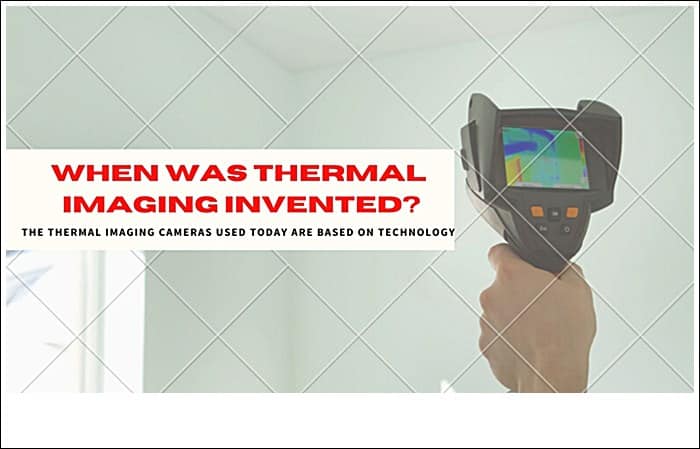The ability to see beyond basic sight has long been an area that people and industry have been after. From medical applications being able to see inside the body without surgery, to applying vision underwater or with low visibility at night, penetrating sight continues to be in high demand. No surprise, the ability to see different spectrums, including temperature, has also been extremely useful as well. From astronomy to industrial manufacturing, seeing what’s happening with spectrums other than what the naked eye can see has provided people, companies, and industries the ability to do far more than was possible before simply with greater knowledge and awareness.
A good amount of technology to see things has, no surprise to many, come from military applications. Obviously, the ability to see the enemy and not be surprised is a high priority at all times. However, the same technologies, once they become commonplace on both sides of the fence, generally then tend to bleed out to civilian industries for non-military application. Vision technology has long been one of these categories, with common examples including night vision for pilots, low-light and fog vision for traffic and law enforcement, and heat technology sensing for security applications. Included in this mix of evolving technology uses is also thermal imaging. They are extremely useful in low light settings or where there is no external secondary light to work with, but heat needs to be tracked. The technology needs no outside source of light to function; it works off of the ability to sense changes and differentiation in heat levels and represent them across a color spectrum that makes immediate sense and use to a regular viewer.
Background and Basis for Today’s Technology
It was Isaac Newton who can be credited with discerning that light and energy in the form of light could be spread across a color spectrum. But it took another century and a half before the prism was made functional by Frederick William Herschel in 1800. Herschel was the first to try to measure light color by temperature. As it turned out, Herschel realized the temperature change and color had a relationship by accident. Leaving for a midday meal, he came back to find that a thermometer left unintentionally near a red light spectrum produced a distinct reading that was not the red light close to it. This was the element Herschel couldn’t find previously when he was trying to add up the different color values to equal the total of a sunlight’s reading in total. It was the missing light spectrum that couldn’t be seen by the naked eye automatically. Using math and logic, the missing piece was identified and labeled scientifically.
Just 20 years later, Thomas Johann Seebeck then made another breakthrough identifying what happens when electricity is influenced by hot temperature, i.e. electromotive force or thermo EMF. 10 years later and 50 years, respectively, two more breakthroughs happened. Jean Charles Peltier identified that temperature acts in a unique manner when two materials connect with each other, and both are being charged with an electrical current. Then, Samuel Langley followed up his invention of a radiant heat detector that was extremely sensitive in reading and measurement. This creation, the bolometer, was able to split out temperature differences two the units of one hundred thousandth of a Celsius degree, which was previously not possible.
While none of the above actually produced a temperature-sensitive camera tool, they did provide the principles that later became the basis for thermal imaging equipment. The formula was made clear from the prior science that a target’s surface radiates outbound radiation on the infrared scale, and that can be changed into electricity.
Moving Into the 20th Century
An infrared detecting tool was designed right after World War I, but it was in 1929 when Kalman Tihany created an infrared-sensitive camera that worked at night for military air defense systems. That same technology spread quickly to the U.S. From there, thermal imaging got a real boost when industrial technology research from big company names like Hughes Aircraft as well as Honeywell and Texas Instruments. And it was one of the many products worked on and improved by the military-industrial complex President Eisenhower eventually complained about after World War II.
However, it was not until the late 1970s that FLIR was established and really pushed thermal imaging to the level of usefulness that we enjoy today. Created in 1978, FLIR became the go-to company that really put thermal imaging on the civilian application map, producing a set of tools that had huge and broad applications well beyond whatever was imagined by the military. As a result, thermal imaging found its way into industrial safety, quality control, manufacturing, security systems, law enforcement applications, science and research, field monitoring, fabrication systems, and much more.
Thermal Imaging Today
Married with the advanced technology of computer control and related software systems, thermal imaging today has gone deep into the invisible universe, opening up an amazing Grand Canyon of information now possible to measure on the visual temperature scale. From high heat chamber management applications to literally being able to examine the inside of the Sun, thermal imaging has gone beyond any concept scientists and inventors ever imagined 100 or 200 years ago. And the technology continues to improve with every few years’ developments going further. Find out more with Conners Industrial. You’ll be amazed at what’s possible today.

Leave a Reply
You must be logged in to post a comment.